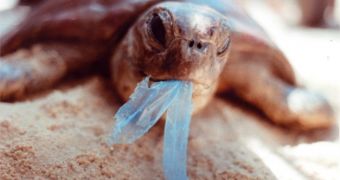A new paper published in yesterday's issue of the journal PLOS ONE details the discovery of thousands of bits and pieces of plastic in the waters surrounding Australia.
Researchers working with the University of Western Australia's Ocean Institute say that, for the most part, these plastic fragments are so small that they are impossible to observe with the naked eye.
However, they are there and, as “invisible” as they might be, they constitute a threat to local marine wildlife and even seabirds.
What's more, the researchers warn that, because they can easily enter the food chain, these particles also threaten the wellbeing of people living in the region.
In their paper, the researchers detail that these plastic fragments constitute a potential health hazard for both animals and humans due to the fact that they might contain various harmful chemical compounds.
Furthermore, it appears that, as they float about in the ocean, they absorb many of the pollutants they come in contact with and thus become even more dangerous than they would normally be.
“Plastic doesn't biodegrade in water but with the sun and heat it breaks down into smaller and smaller particles over time. Some plastic has plasticisers like BPA that can be toxic but more importantly, when the plastic is out in the ocean, the surface of the plastic acts like a sponge for oily pollutants,” specialist Julia Reisser explains.
“You look at the ocean and it looks really pristine but there was quite a high concentration of plastics there,” the researcher stresses.
According to ABC Science, Julia Reisser and her colleagues base their claims on data obtained by collecting and analyzing water samples from around Australia.
Apparently, the researchers have found that each square kilometer of ocean around Australia contains an average of 4,000 plastic fragments. In some areas, there were as many as 15,000 – 23,000 of plastic fragments per square kilometer.
Because the highest concentrations of plastic fragments were found close to populated areas, the researchers suspect that the main source for these microplastics is not discarded fishing equipment, but cups, bottles, bags and other packaging that people fail to properly dispose of.

 14 DAY TRIAL //
14 DAY TRIAL //